Tourism in Bosnia and Herzegovina
Tourism in Bosnia and Herzegovina is characterized by its Ottoman and Austro-Hungarian history, which is reflected in the architectural styles throughout the country. While in Bosnia, you can find a wide range of examples of Austro-Hungarian architecture along the Miliacka River.
The beauty of this country, along with its diverse landscapes, encourages tourists to explore Bosnia and Herzegovina. The country is also known for its varied terrain, featuring a rugged mountainous core, golden sandy beaches, and dense forests. Unlike other popular destinations, this Balkan nation remains relatively undiscovered by the masses, making it a hidden gem worth exploring.
Bosnia and Herzegovina is a country located in Southeast Europe, within the Balkan region. It is bordered by Serbia to the east, Montenegro to the south, and Croatia to the west and north. The capital and largest city is Sarajevo, located in the heart of the country.
Bosnia and Herzegovina is officially a federal parliamentary constitutional republic, consisting of two self-governing political entities: the Federation of Bosnia and Herzegovina and the Republika Srpska. These two entities comprise three main ethnic groups: Bosniaks, Serbs, and Croats. A native citizen, regardless of ethnicity, is commonly referred to as a Bosnian. The total population of the country is approximately 3.5 million, with the capital Sarajevo housing just under 400,000 residents.
The three languages used are based on ethnicity: Bosnian, Serbian, and Croatian. Islam is the predominant religion in the country, followed by Christianity (with both Serbian Orthodox and Roman Catholic churches).
### What to Know Before Visiting Bosnia and Herzegovina
Sarajevo
Sarajevo is the largest city and capital of Bosnia and Herzegovina. The city is a melting pot of various cultures. Residents of different ethnicities and religions coexist here, with Bosniaks, Croats, Serbs, as well as Muslims, Roman Catholics, and Orthodox Christians living in harmony. Due to its cultural and religious diversity, Sarajevo is sometimes referred to as "the European Jerusalem." It is considered a place "where East meets West." This city also boasts a long and multifaceted history, playing a significant role in some of the major events in European history. Therefore, make sure to visit Sarajevo and discover all the historical sites the city has to offer. You can, of course, enlist the help of tour companies in Bosnia and Herzegovina for the best assistance.
Mostar
It is one of the most beautiful cities for tourism in Bosnia and Herzegovina. It is a place where Western and Eastern influences merge. While the city is famous for its iconic Ottoman bridge spanning the Neretva River, Mostar has much more to offer. In this old city of Herzegovina, you'll find not only numerous mosques but also Catholic and Orthodox churches, as well as a Jewish synagogue.
You can also visit one of the traditional Ottoman houses, the old bazaar with its traditional craft shops, and even a Turkish bath. If you're lucky, you might see one of the divers jumping off the bridge into the Neretva River!
Medjugorje
Medjugorje is a small town in Herzegovina and a popular Catholic pilgrimage site. It gained fame due to a series of alleged apparitions of the Virgin Mary to local children in the 1980s. Since then, it has welcomed pilgrims from around the world who come to pray at Medjugorje. Aside from the hill of apparitions, pilgrims can visit St. James' Church, located at the foot of the hill, where masses are held in Croatian and several other languages, and Cross Mountain, where believers can pray while climbing the Stations of the Cross.
### Natural Wonders While Touring Bosnia and Herzegovina
Una National Park
The park stretches along the valley of the upper Una River and its tributary. It is located in the western part of Bosnia and Herzegovina, near the Croatian border. While it is a protected area, rafting, kayaking, and canoeing are allowed on the Una River, allowing visitors to explore the park's landscapes and enjoy nature. In addition to its natural attractions, the park area includes several medieval towns.
Sutjeska National Park
It is the oldest national park in the country. The highest peak in the park is Maglić, which rises over 2000 meters. The park area offers a wide variety of flora and fauna, including over 300 species of birds, in addition to bears and deer. One of the most popular activities in the park is hiking, with trails ranging up to 8 hours and 22 km for the more experienced hikers. Another option is to explore the park by bike, with cycling trails that stretch for 48 km.
Tara River Canyon
This canyon is one of the deepest river canyons in Europe, extending from Montenegro into Bosnia and Herzegovina for 82 kilometers, forming a border between the two countries. It reaches depths of about 1300 meters. The Tara River is a popular route for rafting due to its strong currents and is also known for its beautiful landscapes, primarily due to over 40 waterfalls cascading down the canyon’s cliffs.
Kravica Waterfall
The most beautiful natural phenomenon in the Herzegovina region is Kravica waterfall. It was formed by the Trebižat River flowing over limestone. The waterfall ranges from 26 to 28 meters in height, and the water forms a stunning terrace with a diameter of 120 meters below the falls. Kravica is located just 10 km from Medjugorje, making it a great stop on your way to (or from) Medjugorje and Mostar.
Activities You Can Do While Touring Bosnia and Herzegovina
Environmental Adventure
The pristine and rugged wilderness that characterizes this land in the heart of the Dinaric Alps is a paradise for nature lovers and thrill-seekers. The diversity of landscapes and ecosystems has created an amazing showcase of natural wonders.
Hiking and trekking in the highlands and exploring the thriving ancient lifestyles in the mountains provide unforgettable experiences during your visit to Bosnia and Herzegovina. The region is home to world-class fly fishing rivers and boasts a rich array of wildlife, including bears, wolves, chamois, eagles, and deer that can be observed in their natural habitats. From mountain biking to paragliding, Mother Nature has given us a wealth of stunning landscapes and magnificent wilderness that few have explored.
Cultural Tourism
Bosnia and Herzegovina is a charming mix of the old and the new. From ancient monasteries of Franciscan and Orthodox monks to famous Ottoman bridges and mosques, the medieval character has been well preserved. Alongside these cultural landmarks, a cultural renaissance has emerged post-war, especially in major cities. Sarajevo hosts some of the most incredible festivals in Europe, such as the film festival and jazz festival.
The cultural heritage of Bosnia and Herzegovina is less likely to be experienced in a museum than in what we call "living museums." The best customs and hobbies can be found in daily life, where one can catch a glimpse of both old and new Europe. People create numerous opportunities for celebrations, festivals, and annual traditions throughout the year. Sarajevo is known for its wide variety of cultural festivals—offering everything from cutting-edge films and the latest jazz rhythms to alternative theater productions.
Health Tourism
The name Bosnia is believed to derive from the ancient Indo-European word "Bosana," which means water. And here, water is certainly abundant. Bosnia and Herzegovina not only boasts a wealth of crystal-clear mountain rivers but also high-quality thermal springs. The government has heavily invested in modernizing thermal spa facilities to offer top-notch spa services to visitors at much lower prices than our European neighbors. With full facilities available in over 15 locations, there is always a comfortable place for a massage or a full thermal treatment. The spas in Sarajevo are ideally located near the city center and the Bjelašnica/Igman ski centers. The spas in Teslić, Fojnica, and Banja Luka also offer spa services with modern facilities, all set in beautiful natural surroundings.
Winter Adventures
With consistent high-quality snowfall from December to March, the mountains of Bosnia and Herzegovina offer a fantastic climate for winter sports. The 14th Winter Olympics proved to be one of the most successful games of their time. Olympic skiing has returned to Bjelašnica and Jahorina with a full range of facilities and new modern accommodations. Skiing, cross-country skiing, and off-piste skiing are increasingly popular, making for an enjoyable winter program on both mountains.
Sarajevo is not the only ski center in Bosnia and Herzegovina. Mount Vlašić, near the ancient town of Travnik, is the best ski resort in Central Bosnia. With new additions of several hotels and guest houses, Vlašić should not be missed. In western Bosnia, there are excellent off-piste ski sites. The Nature Park Blidinje and Kupres are located in a vast wilderness area in the far west of the country.
City Breaks
As city breaks are becoming increasingly popular among European travelers, the list of exciting new destinations for tourism in Bosnia and Herzegovina is growing. Sarajevo Airport has direct flights to European cities such as Vienna, Stockholm, Belgrade, Zagreb, Munich, Stuttgart, Budapest, Ljubljana, and Istanbul.
Despite having only a few low-cost airlines flying to Sarajevo, we make up for it with high-quality, low-cost accommodations and dining. If you are looking for a new getaway for a long weekend, look no further. Sarajevo is the fastest-changing city in Europe. Blending its eastern and western traditions, Sarajevo will enchant you with its vibrant Ottoman Old Town and bustling Austro-Hungarian city center. With dozens of new hotels, an active nightlife, and many tour operators in Bosnia and Herzegovina, there will never be a dull moment in this small capital. Check out the festival schedule throughout the year or come to explore the small Ottoman neighborhoods and enjoy a taste of the East in the heart of Europe. Visit Sarajevo, the city close to your heart.
Summer Tourism in Bosnia and Herzegovina
Few think of Bosnia and Herzegovina and associate it with the Mediterranean Sea. Well, it’s time to change that belief. Herzegovina enjoys a warm, sunny Mediterranean climate all year round. Our little outlet to the sea is Neum, a new resort town just an hour away from the famous cities of Dubrovnik and Mostar. Neum offers the best Dalmatian cuisine and the clear waters of the Adriatic Sea at discounted prices. Located north of the Pelješac Peninsula, Neum Bay is a wonderful spot for family holidays with an abundance of all-inclusive hotels offering a complete program for you and your family.
Using Neum as your beach base, one can visit the Hutovo Blato bird reserve near Čapljina, the largest Vjetrenica cave, the Kravica waterfalls in Ljubuški, the Catholic pilgrimage site in Medjugorje, or the beautiful city of Mostar. Neum is also ideally situated between the Dalmatian cities of Split and Dubrovnik, making all your holiday desires within reach.
Festivals in Bosnia and Herzegovina
Here is a list of some annual festivals:
- Fashion Week (November)
- Sarajevo Winter Arts Festival (February/March)
- Kozara Ethno Festival – Kozara National Park (June – July)
- International Folklore Festival – Sarajevo (July)
- Summer on the Vrbas River – Banja Luka (July)
- Film Festival (July – August)
- Children’s Festival – Sarajevo (June)
- Baščaršija Nights – Sarajevo (July)
- Summer Games in Banja Luka (August)
- European Literature Meetings – Sarajevo (September)
- Theater Festival – Sarajevo (September)
- MESS Theater Festival – Sarajevo (October)
- Jazz Festival – Sarajevo (November)
- OK Zelenigora Festival – Sutjeska National Park (July)
- Winter Holiday Markets in every major city (December and January)
Weather in Bosnia and Herzegovina
The country features several distinct climate types: a temperate continental climate in the northern and central regions, a cold climate in mountainous and sub-mountainous areas, and an Adriatic climate modified by the Mediterranean along its coast. The climate varies from the lowland Pannonian areas in the north along the Sava River and in the foothills, to an alpine climate in the mountainous regions, and a Mediterranean climate in the coastal area and lowlands of Herzegovina in the south and southeast.
Bosnia and Herzegovina receives a relatively high amount of sunshine in the southern region compared to the northern areas. The country also boasts a rich biodiversity (one of the highest diversities in Europe), partly due to its three distinctive geological and climatic regions: the Mediterranean region, the European Siberian-North American region, and the alpine-Nordic mountain region. Historically, winter temperatures (November to February) range from -6.0°C to 6.2°C, while summer temperatures (May to September) range from 9.8°C to 24.7°C.
Precipitation is fairly consistent throughout the year; however, the onset of seasonal rainfall has been disrupted in the past two decades, leading to unexpected floods and drought periods, alongside high temperatures.


.png?locale=en)









_1.webp?locale=en)
.png?locale=en)







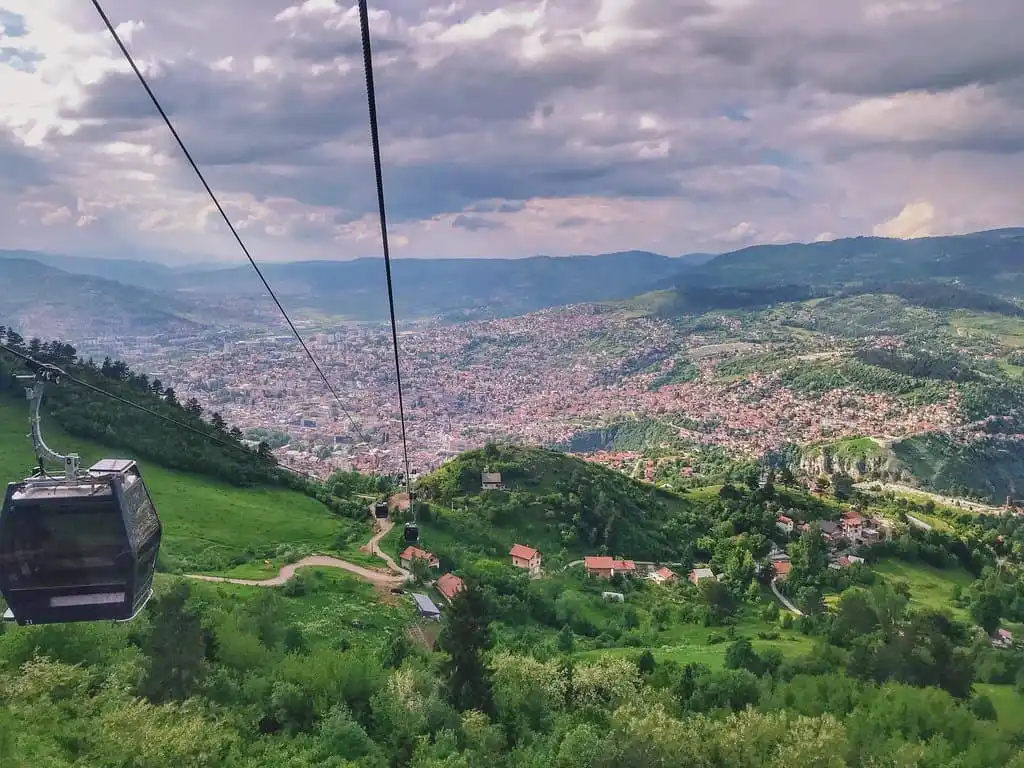.webp?locale=en)
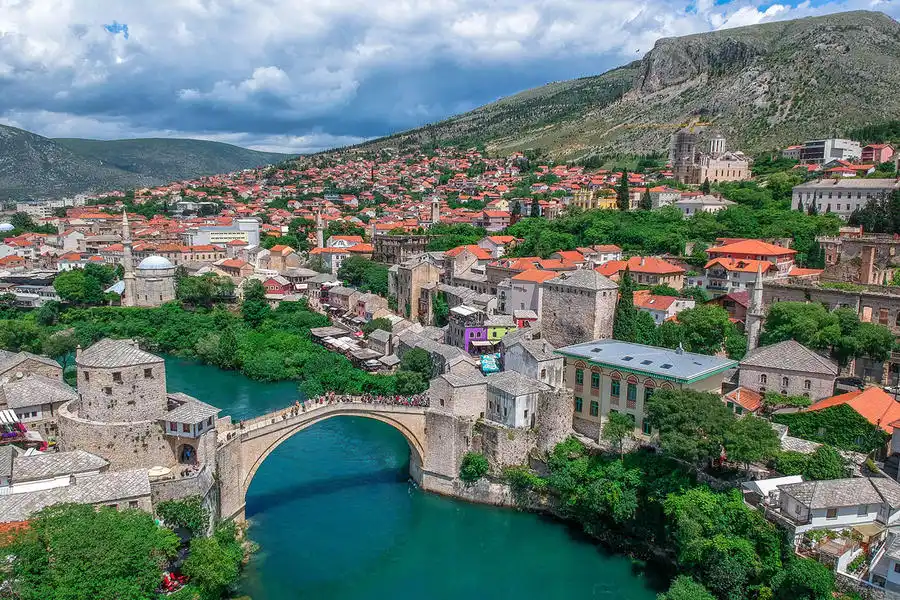.webp?locale=en)
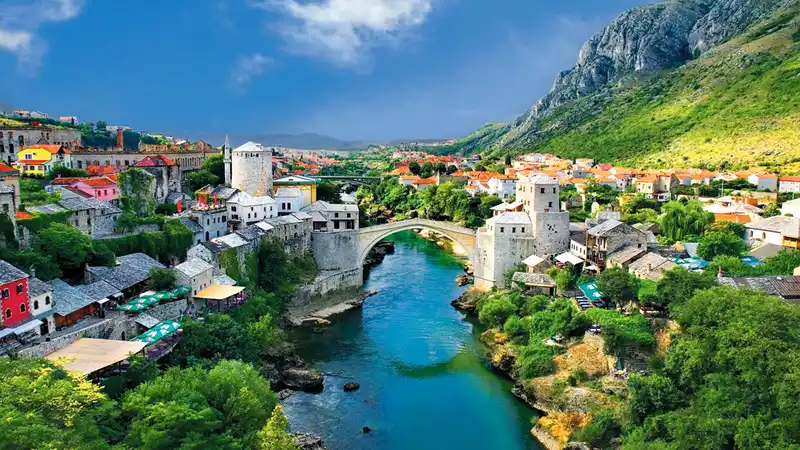.webp?locale=en)
.webp?locale=en)
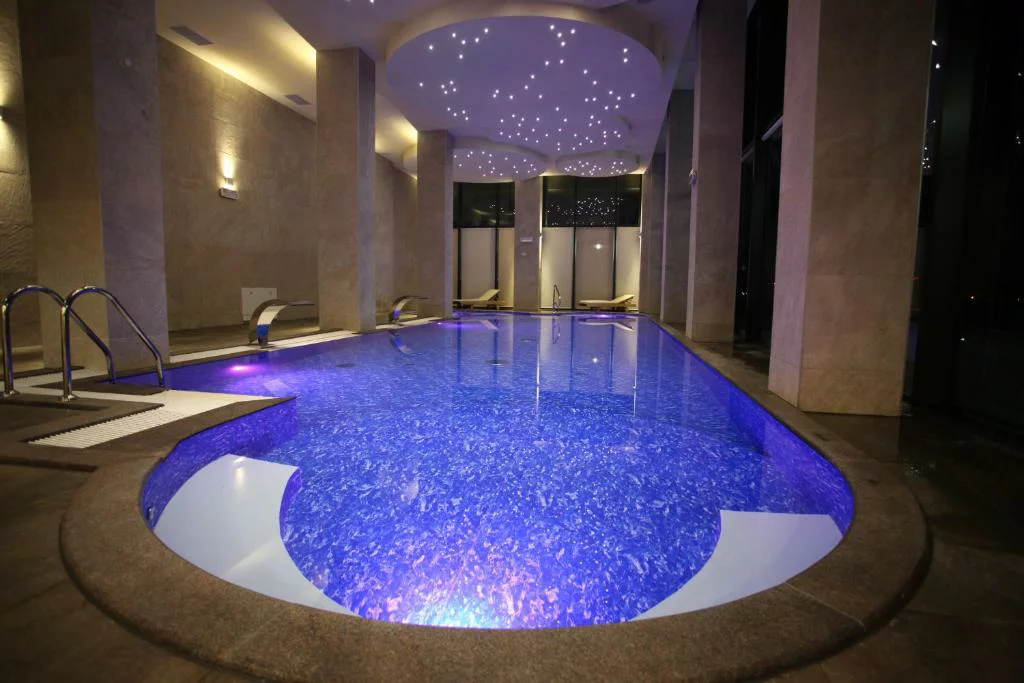
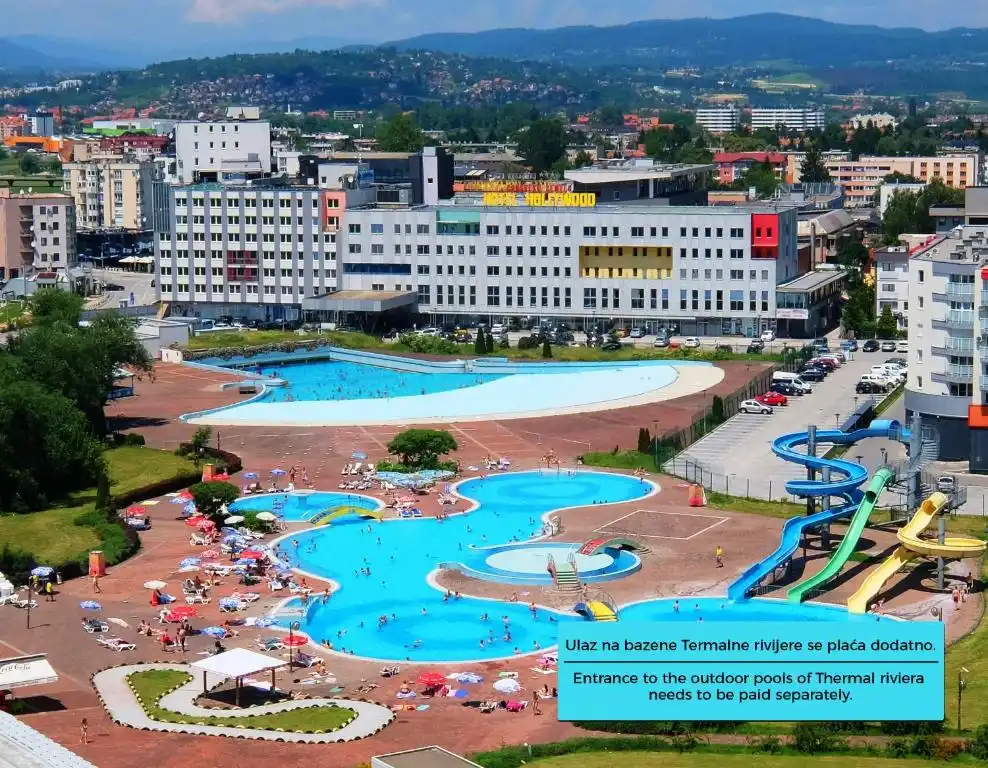.webp?locale=en)
